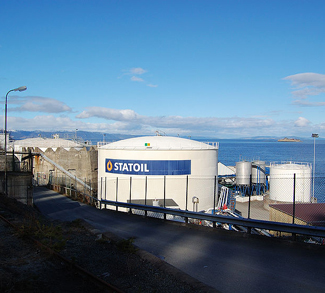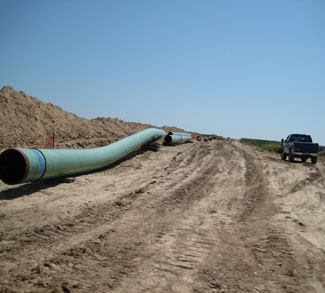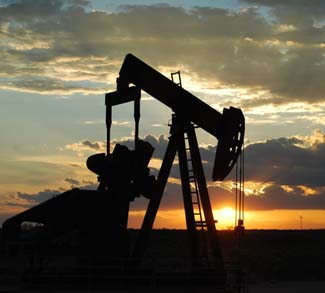Recent developments in offshore hydrocarbon production are set to significantly reshape the economic prospects of two African countries along the continent’s Atlantic coast. On January 6, Senegal and Mauritania officially celebrated the commencement of operations at the Grand Tortue Ahmeyim natural gas field, a project that had been in the works for the past six years. The Grand Tortue Ahmeyim field straddles the maritime border between the two West African states. Its exploitation is being led by a consortium of firms including BP, the US firm Kosmos, and the state-owned companies SMH from Mauritania and Senegal’s Petrosen. The new project brings significant potential for economic transformation in both Senegal and Mauritania, but some unique challenges as well.
Impact on the local energy sectors
Senegal has been extracting offshore hydrocarbon reserves since the Sangomar oil and gas field came online in June 2024. Almost 17 million barrels of oil were produced from this field between June and December, which, at the WTI crude price of $74.69 brought in a total of $1.3 billion in revenue, or a little over 4% of the entire Senegalese nominal GDP in just half a year. This contrasts with the initial expected production from the Grand Tortue Ahmeyim field at 2.5 million tonnes per year, which, at a rate of 228 US dollars per tonne, is expected to amount to approximately $570 million worth of production in 2025. Thus, while there are plans to increase output to 10 million tonnes by 2030, for now, early drilling at the Grand Tortue field will have a modest impact on the Senegalese economy when compared to its existing hydrocarbon reserves.
Mauritania on the other hand will see a significantly greater benefit on a per capita basis than Senegal will. Mauritania is home to around a quarter of Senegal’s population at 4.2 million people versus 17.3 million in Senegal, and about a third of its GDP, roughly $10.6 billion to Senegal’s $31 billion. Mauritania will split the revenues from the field on a 50/50 basis, meaning that the development of the gas field will have a greater impact on the Mauritanian economy as a whole. Additionally, two of Mauritania’s largest oil fields discovered in the 2000s have since closed, meaning that, in terms of hydrocarbon development, Mauritania is less diversified than Senegal.
Impact on the wider local economies
Further contrasting with Mauritania, Senegal is also on the cusp of achieving what Mauritania has yet to accomplish: escaping low-income status. According to an evaluation by the MSCI, Senegal is considered a “frontier” market; one that has a developed enough economically to no longer classify as a “least developed country” but is either too small, too poor, or both to be considered a full emerging economy. Senegal’s hydrocarbon reserves will play a role in this shift. In addition to the Sangomar field, demand for Senegalese hydrocarbons will in the coming years make up a greater percentage of Senegal’s economy. For Senegal, this will have the effect of attracting more investment and revenue in a country that is also blessed with aluminum and lime phosphates as well as gold. Furthermore, Senegal’s democratic institutions are relatively strong, culminated by its recent peaceful transfer of power in the presidential and parliamentary elections in 2024. This democratic climate suggests that the people of Senegal could benefit from the country’s expanding hydrocarbon reserves. Ideally, strong Senegalese political institutions can counteract the potential negative effects of the “resource curse,” which has plagued resource-rich economies with poor institutions such as the DRC or Angola, in stark contrast to resource-dependent states with strong democratic institutions, like Norway.
The need for strong institutions is underscored by the fact that Mauritania encounters similar difficulties to those faced by states suffering the “resource curse.” Mauritania’s recent path towards democratization saw relatively successful elections in 2023 and 2024. However, in the best-case scenario, it will take time for the country to develop strong institutions that earn the respect of both the Mauritanian public and the international business community. This means that, despite its potential to become the continent’s third largest gas producer after Algeria and Nigeria, Mauritania still faces greater difficulty in making sure that ordinary citizens benefit from its development. The expected increase in the country’s foreign direct investment for the Grand Tortue field will also have positive effects. This will increase available capital for the country’s mineral industry, on which it has been reliant, as well as low-emission sources of energy like wind, solar, and a future green hydrogen plant scheduled to come online in 2028. With an economy heavily reliant on extracted resources like energy and minerals, developing stable political institutions will be an absolute necessity for Mauritania’s sustainable growth for the foreseeable future.
Looking ahead, both Mauritania and Senegal will see positive effects from the development of the Grand Tortue field. And while the benefits will not be enough to radically transform either economy overnight, revenue from the field can be expected to continue fueling the explosive growth seen in Senegal over the past 25 years and the gradual easing of Mauritania’s historical dependence on traditional commodities markets.




